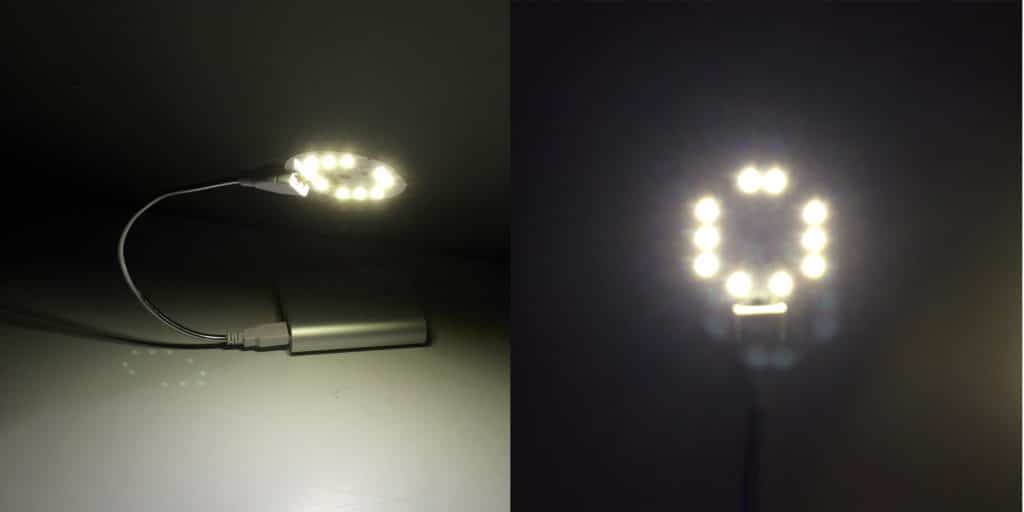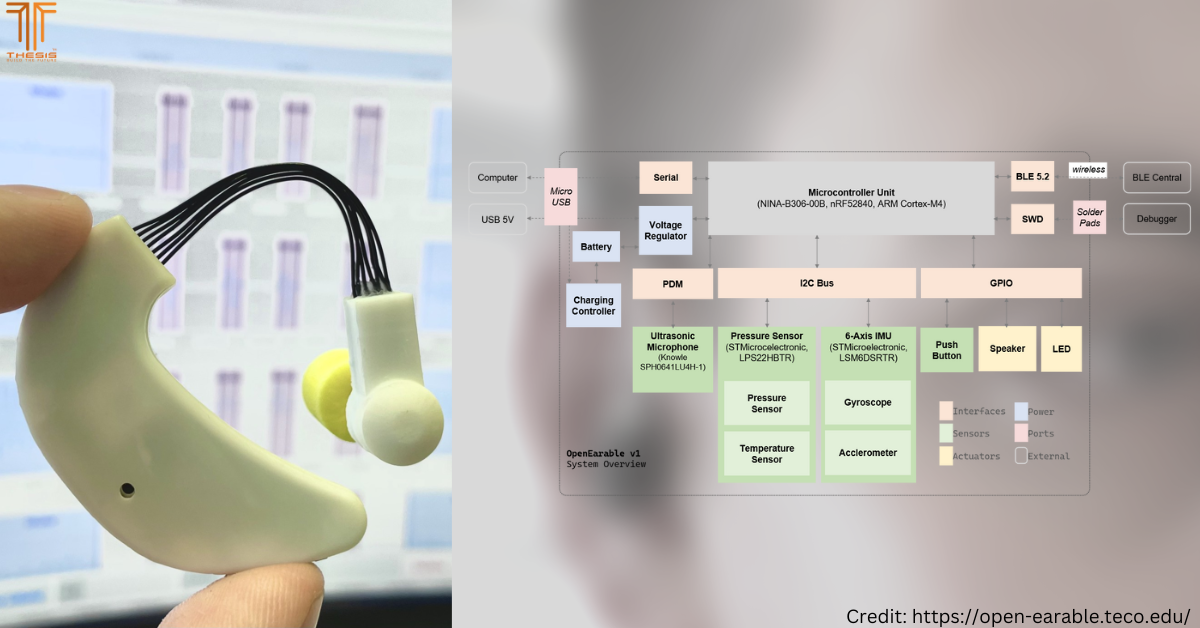

USB powered lights are convenient for reading, off-center lighting for mobile photo-taking and the like and on the market are some low-cost and simple USB-powered reading lights such as the S$2 Xiaomi Mi LED light.

Unfortunately, we found that the light output is not sufficient for certain conditions. A quick tear-down revealed a SAM semiconductor S8101 LED driver and what looks to be a row of six PLCC-2 3020 Package LEDs. The Mi LED light is rated at 1.2W and draws about 240mA @ 5V, that gives about 40mA/200mW power dissipation per LED.
While low-cost, the flexible-neck USB light puts out a measly light. Inspired, it was time to quickly hack our own.

We found another low-cost LED-powered lamp, rated at 5W and 450lumens on the packaging, which is supposed to be four times brighter. It has ten 5730 COB LEDs. The 5730s are rated to output more light than a 3020 module (~45 vs 5.4 lumens), see comparison here. The 5730 LED module also has a greater efficiency than the 3020 (90 vs 80 lumens/watt), however, note that lumen brightness varies greatly for different colour temperatures and LED binning, and this is just a simple gauge.

We removed the LED-PCB from its plastic housing and, with a little sawing (literally), soldered it to a flexible-neck USB extender and voila! We’ve now got our 450-lumen flexible USB-LED light. It’s blazingly bright, looks good and performs well!

Until we touched it to remove it from the USB port and YIKES! IT WAS HOT. It wasn’t warm, but HOT.

The thermal camera showed the LEDs and the schottky diodes heating up to a blazing 105°C. Insane!

Not to worry, we had a couple of cooling fans meant for cooling PC motherboard northbridges lying around. Those fans usually run at 12V from a motherboard fan header. USB voltage is rated at 5V and adding a 5V to 12V step-up converter is neither practical nor a 5-minute solution. So instead, we got a small 5V 40x40x10mm cooling fan from the hardware room and swapped out the 12V 40mm fan with a 5V one. No fuss!

Fortunately, the mounting holes of the northbridge cooler and the LED PCB were conveniently aligned! So with some thermal paste and trusty cable ties, the heatsink fan assembly nestled nicely onto the PCB and the fan wires were soldered to the 5V and USB ground. The assembly runs at a cool 34.7°C now!

A quick measurement with the light-meter shows 115.7 kLux of brightness, (converting that over 60mm2 or 0.0036m2 area to lumens is 416.52 lumens, close to the rated 450 lumens of the product.
It also seems to be drawing 960mA, or 4.82watts at 5.03 volts, which is expected.
A note of caution: a standard USB2.0 port on your computer is capable of delivering up to 500mA (0.5A); with USB 3.0, it moves up to 900mA (0.9A), so this guy isn’t exactly USB-hub friendly, but plugging it into a standard powerbank or a dedicated USB wall-adapter isn’t an issue since they can provide upwards of 1A.

With that, now we have a 416lumen USB-powered flexible lamp for various uses in the lab. This project took a little less than a lunch break to hack together, we hope you like it!
Build the future.



